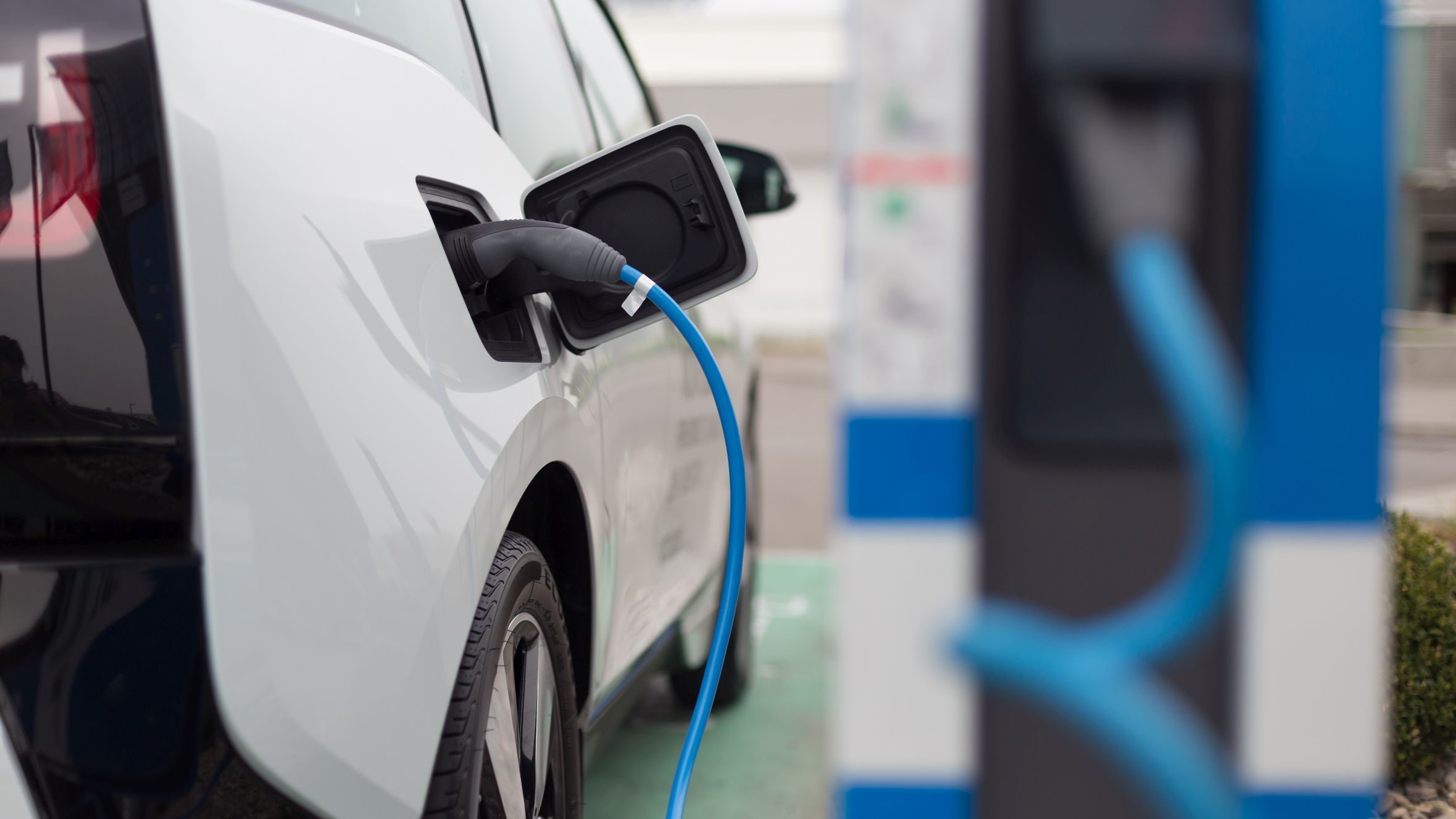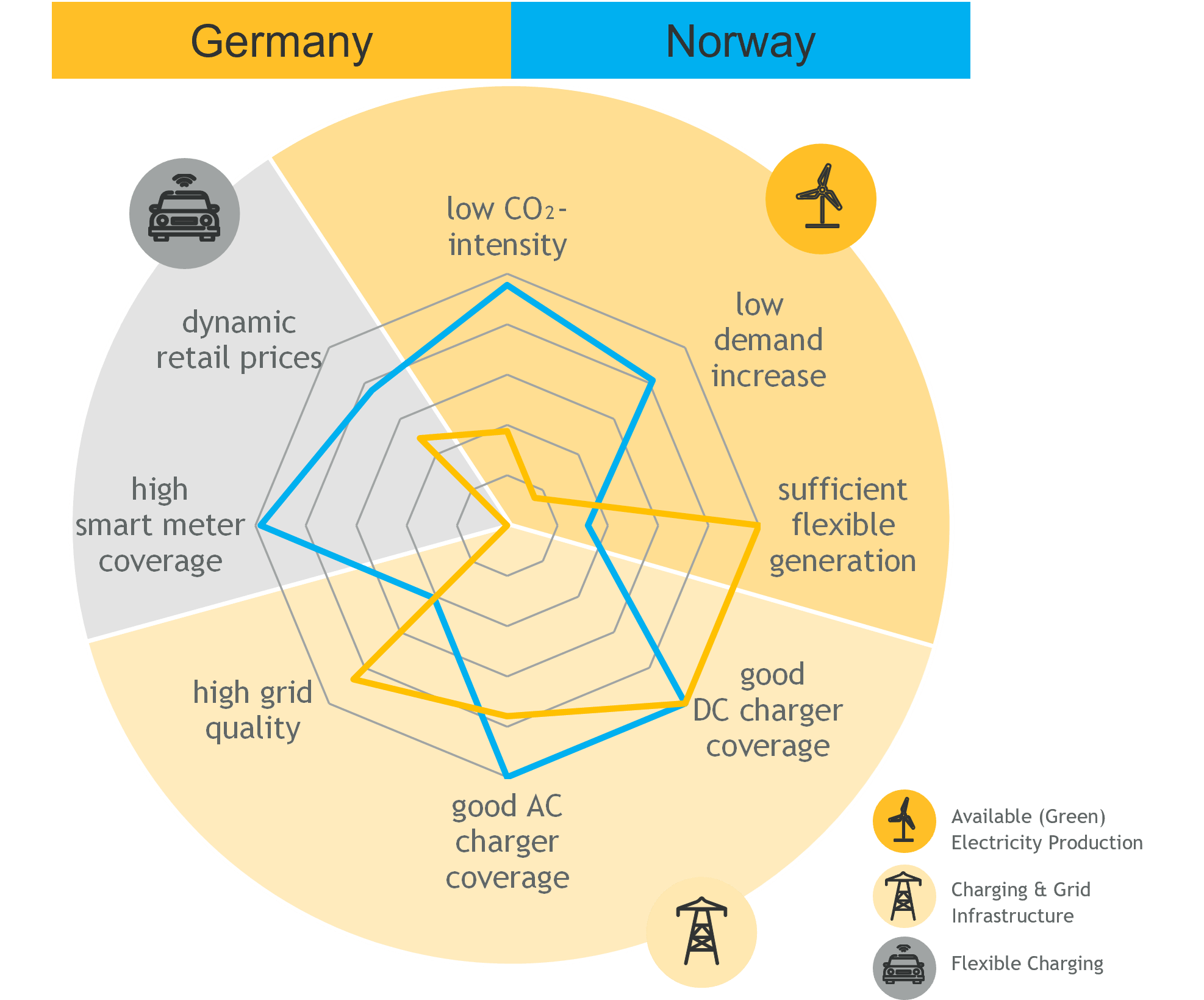
The Norwegian energy system is particularly well prepared for the ramp-up of electromobility. Germany, on the other hand, still has some catching up to do, especially in creating incentives for flexible charging. This is shown by a new index of the Energy Economics Institute (EWI) at the University of Cologne, the “EWI EV Preparedness Index 2021”. The analysis was commissioned by the Society for the Promotion of the Institute of Energy Economics at the University of Cologne.
The share of electric vehicles in European car traffic has been increasing for years and is currently around 1.5 percent. In the coming years, however, electromobility is expected to become even more important: In 2030, according to EU Commission targets, 30 million electric passenger cars should be on the road in the EU and three million charging points should have been set up. This poses enormous challenges for the power systems.
EWI researchers Konstantin Gruber, Philipp Kienscherf, Dr. Philip Schnaars, Dr. Eren Çam and Karsten Schroer have investigated how well prepared 1. power generation, 2. charging and grid infrastructure, and 3. conditions for flexible charging are for the ramp-up of electromobility. Using eight indicators, the team systematically assessed the conditions in 18 European countries and used them to develop the “EV Preparedness Index.”
Figure 1 illustrates the performance of Norway and Germany: the higher the respective value on the scales, the better prepared the country is for the ramp-up of electromobility in that criterion. In Norway, for example, a lot of AC and DC charging infrastructure is already in place, which supports the ramp-up. Grid stability, on the other hand, is still in need of improvement, which could prove problematic in light of growing EV adoption.

The analysis of the 18 European energy systems shows a diverse picture in terms of “EV Preparedness”. Countries address the three challenges with different preconditions and focus:
The electricity generation mix of a given country determines the CO₂ footprint of electromobility. Electricity systems with a focus on renewables such as hydropower (Switzerland, Austria, and Norway) have a clear advantage due to the low CO₂ intensity of their generation.
However, in order to be able to compensate for peak loads and, if necessary, temporarily low feed-in from renewables, electricity systems also need sufficient secured generation capacity. Sweden, Finland, and Hungary have a shortfall of secured capacity. However, most countries have sufficient secured capacity.
Another indicator is the potential increase in electricity demand that would result from 100% electrification of the passenger automobile fleet. In countries with large vehicle fleets (Germany, the United Kingdom, Italy, and Spain) or relatively low per capita electricity consumption (Portugal), electricity demand would increase by up to 30%. Nordic countries, on the other hand, experience only a small increase in their electricity demand. Countries with currently high electricity consumption might absorb the additional electricity demand from EVs better than countries with lower electricity consumption.
Predominantly coal-based energy systems (Poland, Czech Republic, Germany, and Hungary) with relatively high CO₂-intensity perform worst overall in terms of electricity generation.
The ramp-up of electromobility requires a nationwide, high-performance AC and DC charging infrastructure. This is needed for a smooth transition to electromobility. While the expansion of fast and normal charging stations (DC and AC charging stations) is already well advanced in the Netherlands and Norway, for example, other countries (Poland, Ireland) have deficiencies in their charging infrastructure.
Considering the quality of the grid infrastructure, Germany, France, Switzerland, and Finland are well prepared to handle the increasing load from electric vehicles. Italy performs worst with the most supply interruptions.
Time-of-use (TOU) tariffs create incentives for charging electric vehicles in a way that serves the system and/or the grid by shifting electricity consumption to periods of high RE feed-in. The technical prerequisite is smart electricity meters, the penetration of which has increased significantly in recent years in many of the countries considered. “In addition to the technical prerequisites, however, economic incentives for flexible charging are also important,” says Dr. Philip Schnaars. “In particular, costs of charging should be primarily determined by electricity procurement and grid costs to incentivize flexible charging.”
In countries such as Italy, Finland and Norway, flexible charging is enabled both by technical requirements and by a lower share of government electricity price components. Countries with a low share of smart meters (Belgium, Czech Republic, Hungary, Germany, etc.) or a low share of potentially flexible components in the electricity sales price (Denmark, Netherlands, and Germany) are ill-prepared for the introduction of TOU tariffs for end-users. Germany ranks worst in this household requirement, as neither the technical requirements are met, nor are there incentives for households to make their own charging behavior more flexible.

The countries with the highest “EV Preparedness Score” are Norway, Sweden, and Switzerland. The leading countries have a strong renewable energy sector. Poland, Hungary, and Ireland have the greatest need to catch up. The main reason for the poor performance is a very CO₂-intensive electricity sector, which reduces the benefits of electric cars (especially in Poland), as well as low coverage with charging stations and poor grid quality.